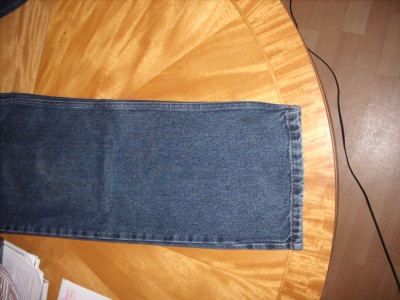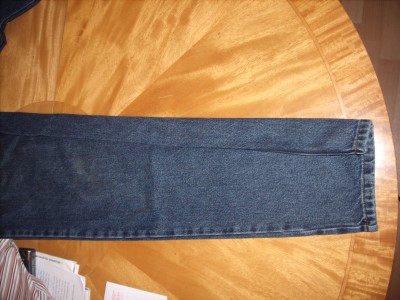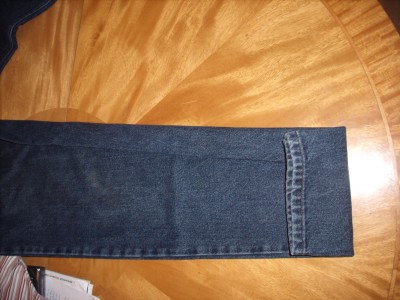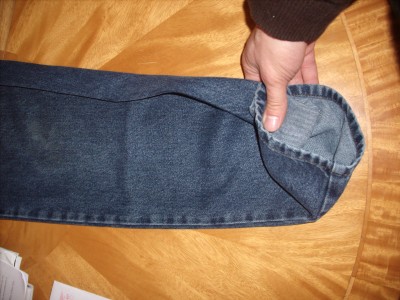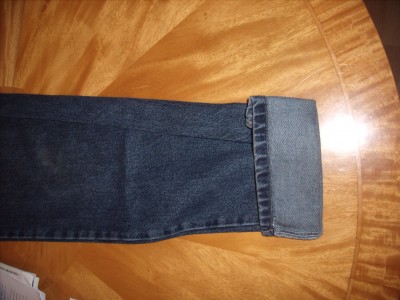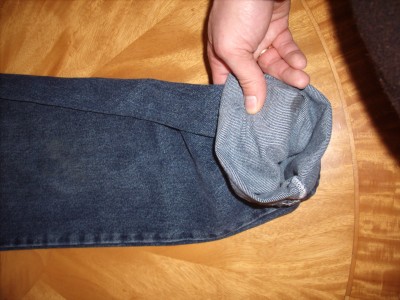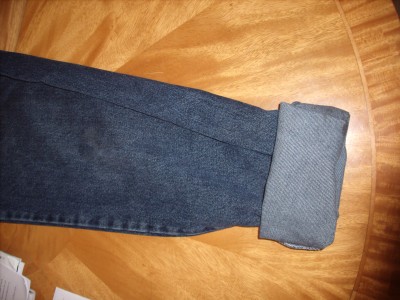Warmer and dry; Chains
February 1st, 2012
Today is supposed to be very warm, so I scaled down from the winter coat to a sweater plus rain jacket. I won’t repeat myself on how the fixed gear causes me to run warmer than usual, but today was another case in point of overheating. The temperature wasn’t actually so high – 37 degrees – but it sure felt warm.
Clothing: Light sweater, waterproof windbreaker, waterproof shoes, messenger bag. Light cotton (?) biking gloves.
If you canvas ten bicycle-inclined people and ask them about maintenance, nine of them will talk about the chain (and the other one will be clever). It bears repeating that if you do any of the following things, you need to clean and oil your chain at least once a month, and probably more often.
1. Ride your bike more than twice a week
2. Ride in rain or snow, even once
3. Store your bike outside
4. Ride off road
As regular transportation cyclists, we all see, and then hear, those bikers who are crawling along, straining their muscles to go five miles an hour, the bike shrieking as though in pain, and the chain recently dredged from the hold of the Titanic. We love to blog about them. I really wanted to make pamphlets to hand to bikers inching up the Longfellow Bridge in spring explaining how to do it (if anyone’s interested, I have other informational ideas, although the whole medium of unsolicited advice is a little obnoxious). I’ll resist the desire to say more, except, clean your chain!
Cool and Dry; Tires
January 31st, 2012
Today was another uneventful winter commute. Dry ground (save the open fire hydrant on Cambridge Street in Beacon Hill), high 30s, nothing special to report. I took the fixed gear today because the forecast was nice. The lack of fenders (see, they’re useful even in fair weather!) made me nervous for my clothing through the aforementioned water on the street.
Clothing: Heavy winter coat, wool gloves, waterproof shoes. No rain pants; messenger bag.
True to form, the fixed gear made me ride harder than usual (I love the way it pushes you up hills!) and the messenger bag constricted me a little. I managed to break a sweat.
I haven’t pumped my tires the entire month. This is a luxury you have in the winter: air escapes much more slowly when the temperature is below 50 degrees. (I’m sure it has something to do with the rubber becoming more porous, but that’s a tire engineer’s concern.) In the summer, if you aren’t pumping the tires once per week, then you feel as though you’re riding on a wet sock.
The reasons to stay on top of tire pressure are for performance (avoiding “wet sock” syndrome) and for “pinch flat” prevention. I also think that tires which are generally puncture resistant (from road debris) also perform better at higher pressure as they can scatter the debris as you ride instead of flopping down on its sharp edges.
Wet, wet, wet; More Fenders
January 27th, 2012
I knew it was dreary outside when I left, but within five minutes it was an outright downpour. As I was waiting at a light (with three cyclists behind me, mind you), the next person in line says to me, “If I had known it would be like this, I would have taken the bus.” I scanned over his bike, a mountain frame with wide tires, and noted, “No fenders, huh?”
I first understood the need for fenders in wetter weather than this. It was fall and I had ridden to my dad’s house without sight of rain, and only a light fall coat for protection. On the trip home (late, perhaps midnight), the rain was just straight downpour; the bike sent a gritty spray of sand up my back and also into my face. The bearings in the chain received a very heavy sludge that slowed my riding despite my desire to get home as soon as possible. I later found sand inside my pants.
Needless to say, I bought fenders the next week and have never regretted it for a second. Only much later, in a different heavy downpour I was compelled to ride through did I learn the value of proper rain attire, but that’s a story for another time.
Today’s ride went quickly because it was engaging: 43 degrees and water cooling on my face kept my body temperature down while I steered around relatively heavy traffic.
Clothing: Same as yesterday, heavy winter coat, wool gloves, rain pants, waterproof shoes. I got some water running down my socks, and that annoying “is everything inside my coat wet?” feeling, but it wasn’t. I did wish I had a hood today, though. I was so drenched my coworker thought I looked like a character from a horror movie.
Clear and Cool; Roll Up Your Pants, Better
January 25th, 2012
The ride in today was just lovely. It was cool (38 degrees) but not cold; the pavement was dry; the traffic was light (har har). I rode the fixed gear today and boy was it fun. I forget how I have to resist the temptation to tear it up on that bike – I get into work all overheated.
Clothing: Heavy winter coat, gloves (although I took them off halfway through the ride), waterproof shoes. NO rain pants today (a winter treat!).
Every so often I’ll see someone riding along with an absolutely atrociously rolled up pant leg. The pants are crumpled the whole length, the bottom is balled into the back of their knee, and their bare leg is exposed to the cold. It gets the job done, but this method is uncomfortable, unsightly, and results in very wrinkled clothing after the ride.
Rolling up your right pant leg is a necessity (unless you have a chain guard, or you’re wearing shorts, duh), as it will keep the bike from at the least rubbing grease on your pant leg, and and at the worst from ripping a hole in the pants or causing you to lose control. (All these things have happened to me – see below.) If your bike is really dirty, it may behoove you to roll up the left one too (a lot of the cuffs on my left pant legs have black streaks from rubbing grit off the frame).
The proper way to roll up your pants (and shirt sleeves!) came to me by way of the military, which, you may know is a stickler for neatness. The key is not to just push the offending fabric out of the way, but rather to fold the excess into a flat, neat cuff. This is basically the same technique you would use if you were tight rolling jeans, and it’s easy with a little practice (best done with the clothes off you to remove some variables). I’ll explain how to do it standing over your clothes and you can extend it to when you’re wearing it.
1. Lay the pants flat on a surface, face up, with the seams on the side and the fabric smoothed out.
2. Fold the inseam over an inch. The amount you fold over can vary depending on the amount of taper in your pant leg.
3. Fold the bottom of the leg up 1-3 inches (depending on your preference; it is easier to do when you use more fabric).
4. With one hand (let’s say, your right) pinching the back of the pant leg and inside the fabric from step 3, gently form a cuff with your left hand with the remaining fabric by turning it inside out and smoothing around your right hand.
5. Repeat steps 3 and 4 one or two more times. Two rolls will give you a more secure roll.
If your pants are pretty snugly fitting, you don’t need to do step 2: the cuff will remain neat without gathering the extra fabric. When done properly, you can create a very neat roll which will not crease your clothing and will also keep your pants away from the chain.
* The worst chain chomping I’ve had was in Times Square in August 2010. It wasn’t the chain’s fault, per se, but it had similar effect. I was making a right turn on about 47th Street on my fixed gear, when an errant shoe lace on my left foot got wrapped around the crank. With every revolution (as I frantically backpedaled and slammed on the brake), my foot was bound tighter and tighter. When I came to a stop, my weight listed… left and I slowly tipped over. This being New York, nobody batted an eyelash at some biker falling over for no reason in the middle of the street. I picked up the bike and literally hopped to the curb to unravel my shoelace.
** The worst clothing-chain chomping I’ve seen was when my fiancee and I were riding on Cambridge Street near Harvard Square, totally flying along when her bike (also a fixed gear) comes to a screeching halt and she falls to the side. Her pant leg was totally caught inside the chain, and the tire was rubbed flat through the tread.
Spring Is Here (?); Bags
January 24th, 2012
I should announce in advance any time I have to wear a suit to work: it is highly correlated with weird weather. Often it’s a heavy storm or cold snap, but today it appears to be freakishly warm (46 degrees this morning).
Technically, wearing a suit is no different from wearing other clothing. However, for me it adds a few complications: the jacket (what to do with it, as it’s long and sticks out of coats), cleanliness (you don’t want to get grit or slush on that bad boy), and the shoes (I usually leave my shoes at my desk). If this were most any other season, I might consider just wearing everything. Since this is the Dirty Season (winter to the lay person), I wear my rain pants, any coat, my normal bike-to-work shoes, and pack the jacket and shoes in panniers.
Clothing: Rain jacket, rain pants, waterproof shoes. No gloves.
I got a little warm riding in despite the light clothing. The key is airflow. I already had the tie knotted, and the shirt tucked in; the rain clothes add extra constriction. However, the biggest factor that kept me from getting actually sweaty was the bag. Any kind of bag on your body (whether two strap backpack or a messenger bag) will effectively increase the temperature by at least 10 degrees. The reason is airflow, for two reasons. The first is that there’s no air whatsoever under the straps: your body tries to remove heat, and so it sweats and nothing can escape. This ends up soaking your clothing in weird patches. Second, the straps obstruct any air from circulating between your skin and the openings in your clothing (around your neck, arms, and maybe lower back), which raises your overall temperature. If I want to arrive someplace presentable, I go for panniers.
Since I’m recommending them, I’ll go ahead and say that most any pannier will work. I have Axiom Typhoon LX panniers because that’s what the store had when I urgently needed a bigger bag the night before leaving on a touring trip. (It turns out the saying is true that you will fill whatever size bag you have, however.) They’re dry bag style, totally waterproof, and a giant sack. That’s not ideal because whatever you need is inevitably on the bottom of the sack, however the waterproof property and tough material makes these a good buy.
Cold and Dry; Whither Ear Coverings?
January 19th, 2012
A few months back I switched from your classic Bell bike helmet to a Nutcase helmet. It was mostly for vanity, although perhaps not what you think: the Bell left uglier helmet hair than the Nutcase (whose helmet hair is more “tussle” than “W”). The downside is that the nutcase fits snugly and will not accept a hat or cap underneath, which I truly missed today. My solution a few weeks ago was to wrap a scarf around my face, but I simply didn’t realize how cold it was today when I left.
Weather: 17 degrees and clear.
Clothing: Heavy winter jacket, no extra covering on pants or face. I regret the latter, as my ears were cold. Heavy wool gloves.
Bike: The Crosscheck. I like using panniers much more than bags, which restrict airflow way too much.
The bike is in dire need of some chain cleaning. I forget how much love it needs in the winter between salt, rain and ice.
Snow and Slush is easier than rain
January 17th, 2012
Last night brought Boston about an inch of snow. While the roads were plowed and salted this morning, for bikers that mostly meant wading through small piles of slush. Tonight and tomorrow will inevitably bring ridges of ice to contend with. This morning I rode the dirty laundry to the laundromat, which meant extra time on the road. And although the temperature was supposed to be in the 30s, the extra biking, greater weight, and heavy winter coat caused me to break an unseasonable sweat.
Clothing: As in the other winter modes, I wore my work outfit with a heavy winter coat, rain pants, and waterproof shoes. I definitely overheated today, although I’m not sure why.
Slushy ground is definitely a time when you will bless your fenders. It also means you need to get on top of your maintenance, as that wet, dirty, salty sludge is toxic to moving parts.
